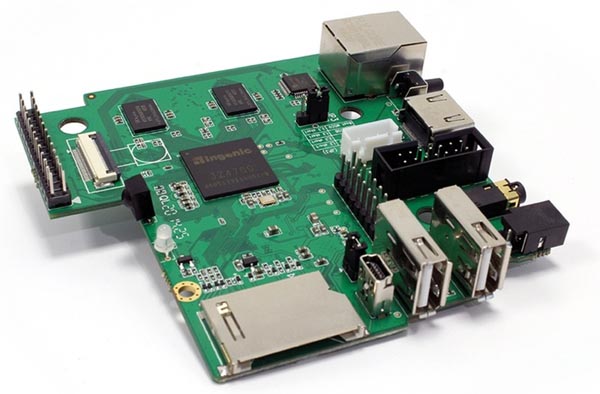Nick Flaherty
EE Times
Does the electronics industry need another low cost development board? After all, we already have nearly 1.5 m Raspberry Pi $25 boards shipped worldwide, as well as a plethora of Arduino and Beagle boards. There's even the Galileo boards from Intel using the low cost, low power x86 X1000 Quark processor.
 |
| MIPS Creator CI20 |
Imagination Technologies has developed its own version of Raspberry Pi, using a MIPS-based processor from Ingenic. The Creator CI20 is the first board that combines Imagination's MIPS, PowerVR and Ensigma programmable RF technologies and so makes it notable.
The 90.2 mm × 95.3 mm board uses an Ingenic JZ4780 with a 1.2 GHz dual core 32bit MIPS with a SIMD engine and both single and double precision floating point FPU. It is also adding 802.11 b/g/n WiFi and Bluetooth 4.0 connectivity. For video and graphics, the PowerVR SGX540 GPU and dedicated video hardware support a suite of video codecs, including MPEG-4, H.264, VP8, MPEG-2, RV9, and others. There's also two USB ports and an HDMI connector.
So far the answer seems to be yes. The Imagination store buckled under the weight of interest in the new board, although the boards are currently free. Imagination has yet to decide on a retail price for the board, saying that it depends on the interest.
The Raspberry Pi focus may be a little specious. The RioTboard launched earlier this year is perhaps a more relevant comparison, with a 1 GHz Freescale I.MX6 Solo ARM-Cortex-A9 that runs Open-CL code and a Freescale.
Pricing is also an issue. RioTboard retails at $75, Galileo at $65, but the latest Raspberry Pi with accessories ends up at $50 to $60.
The Creator board can boot operating systems directly from flash memory or from an SD card and OS images are available for Debian 7, Gentoo, Yocto, Arch, and other Linux distros. The Linux kernel BSP (currently for 3.0.8 and 3.16) is open on github and graphics support includes Xorg-compliant OpenGL 2.1 and OpenGL ES 1.1/2.0 drivers.
If nothing else, the CI20 board with the latest version of Android can open up more embedded system development to a wider market, if, as ever, the price is right. A sub-$40 board will have a much more significant impact than a board at twice the price.
